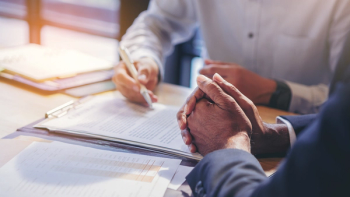
The Impact of Accelerated Drug Development
Dr. Manuel Hermosilla shares his thoughts on how the pharmaceutical industry reacts to challenges that arise during trials, specifically during the search for an effective COVID-19 vaccine.
The development of a COVID-19 vaccine is at the forefront of everyone’s minds.
During these times, I have been constantly reminded of the
Beyond sponsoring firms, regulators, providers, payers, and patient advocacy groups may all support the speedy development of drugs targeting the more pressing medical needs. This kind of broad societal alignment, which is manifesting in extreme form during the current crisis, may give strong tail wind and reduce the amount of non-scientific challenges encountered in the process. In other words, pressure could be a sign of good things to come if it also means broad societal alignment.
Most times, however, the industry must respond to various forms of pressure that do not imply societal alignment. They include paragraph-IV challenges, tornados that destroy manufacturing facilities, adverse clinical trial results, among others. In
Let me unpack the idea by considering a leading source of pressure for firms in the industry: Phase III failures. Phase III clinical trials are the final set of trials required before an application for commercialization is submitted to the regulator. They are the largest, longest, and most expensive set of trials in the process, and are often seen as the last big hurdle to overcome to reach the market. But unfortunately, Phase III success is far from ensured:
A source who lived through a few of these events while working for a large pharmaceutical company recounted to me that Phase III failures invariably raised anxiety levels within the organization. For those working in sales, there was a chance that their positions would be no longer needed. The added tension also reached R&D leaders as Phase III failures introduced sizable pipeline gaps.
If the failed technology relates to others in the pipeline (e.g., they all rely on the same mechanism of action), these gaps may signify that entire programs become unviable, drying up pipelines. Replenishing pipelines with new internal candidates may not be possible in the short term, while re-activating “shelved” candidates may not be attractive. Thus, Phase III failures may, at least in the short run, significantly reduce the size of the R&D portfolios that need management.
In my research, I was specifically interested in the question of whether pharmaceutical companies help themselves in the aftermath of these events.
At face value, this should be good news—firms help themselves by replenishing their pipelines through outsourced innovation. But a flag was raised by the timing of the effect. These reactive licensing events take place within the year after the triggering Phase III failure. This is potentially problematic given that licensing deals have highly involved transactions—many complex ideas to agree upon, due diligence to perform, incentives to align, etc.—all of it via a carefully
This suspicion was not unfounded: I discovered that candidates licensed within a year of a Phase III failure were about 10% less likely to reach the market compared with others licensed under normal circumstances (no recent failure). That is, candidates licensed “in a rush” failed post-licensing development more often. Why?
Some evidence suggested that rushed contracting could be playing a role. Rushed agreements may not have been as iron clad as one could have wanted—remember, these are very complex and detailed agreements. Contractual “lose ends” could have in turn created inter-organizational frictions and, with it, the derailment of collaborations. Insufficient due diligence or weakened due diligence standards also may be playing a role.
Perhaps you have heard of the
It is important to point out that, despite the higher risk, these deals may still have positive net present values (NPV). After all, most of licensing compensation is contingent upon outcomes, so quick failure also means smaller costs. But the relevant question is: Do rushed in-licensing strategies have the highest NPV of all possible strategies? In other words, did reactive deals need to happen so quickly after the Phase III failure?
One could argue that financial markets value these quick licensing reactions. But I found no evidence to support this. Also, let’s not forget that the organization is not only committing financial resources to the licensing deal, but also its business development personnel and later on, potentially, the clinical trial and regulatory liaison machineries. That is, there are non-trivial opportunity costs.
Jean-Pierre Garnier, the former CEO of GlaxoSmithKline, suggested that the loss of personal accountability is
As provocative as this hypothesis may sound, problems like these are common. There is evidence, for example, for the idea that CEOs may use the their
This somber assessment should not be taken as a suggestion that pharmaceutical companies should avoid outsourcing innovation to replenish their pipelines in times of need. About 15 years ago, Matthew Higgins and Daniel Rodriguez showed that
One reason may stem from the relative size of the two types of deals. M&As are much larger transactions than licensing deals, which means they also command much greater scrutiny from stakeholders. The smaller size of licensing deals may make them more discretional and thus more vulnerable to managerial reactions.
While the broad societal alignment behind the development of a COVID vaccine provides a good omen, experts have already started to
Manuel Hermosilla is an assistant professor of marketing at the Carey Business School at Johns Hopkins University. He has studied diverse aspects of new product innovation within the biopharmaceutical industry. His ongoing research focuses on the interplay between patenting and drug development, as well as on different aspects of pharmaceutical drug consumption in emerging markets. He is also a member of the Institute for Operations Research and the Management Sciences (INFORMS).
Newsletter
Lead with insight with the Pharmaceutical Executive newsletter, featuring strategic analysis, leadership trends, and market intelligence for biopharma decision-makers.




